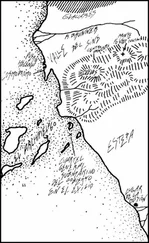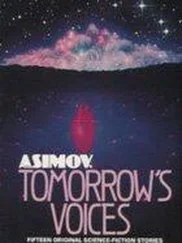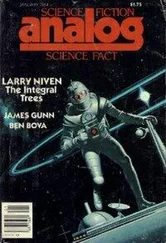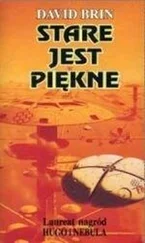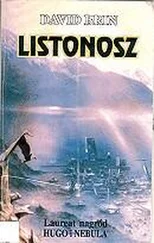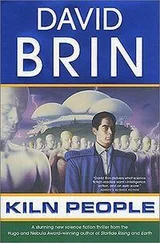David Brin - Heaven's Reach
Здесь есть возможность читать онлайн «David Brin - Heaven's Reach» весь текст электронной книги совершенно бесплатно (целиком полную версию без сокращений). В некоторых случаях можно слушать аудио, скачать через торрент в формате fb2 и присутствует краткое содержание. ISBN: , Жанр: Фантастика и фэнтези, на английском языке. Описание произведения, (предисловие) а так же отзывы посетителей доступны на портале библиотеки ЛибКат.
- Название:Heaven's Reach
- Автор:
- Жанр:
- Год:неизвестен
- ISBN:978-0-30757350-6
- Рейтинг книги:4 / 5. Голосов: 1
-
Избранное:Добавить в избранное
- Отзывы:
-
Ваша оценка:
- 80
- 1
- 2
- 3
- 4
- 5
Heaven's Reach: краткое содержание, описание и аннотация
Предлагаем к чтению аннотацию, описание, краткое содержание или предисловие (зависит от того, что написал сам автор книги «Heaven's Reach»). Если вы не нашли необходимую информацию о книге — напишите в комментариях, мы постараемся отыскать её.
Heaven's Reach — читать онлайн бесплатно полную книгу (весь текст) целиком
Ниже представлен текст книги, разбитый по страницам. Система сохранения места последней прочитанной страницы, позволяет с удобством читать онлайн бесплатно книгу «Heaven's Reach», без необходимости каждый раз заново искать на чём Вы остановились. Поставьте закладку, и сможете в любой момент перейти на страницу, на которой закончили чтение.
Интервал:
Закладка:
“Actually, a simple sphere would accomplish that,” explained the Niss Machine in professorial tones. A pictorial image appeared, showing a hollow shell surrounding a bright crimson pinpoint.
“Some pre-Contact Earthlings actually prophesied such things, calling them—”
“Dyson spheres!” Huck shouted.
We all stared at her. She twisted several vision-stalks in a shrug.
“C’mon guys. Catch up on your classic scifi.”
Hoons think more slowly than g’Keks, but I nodded at last.
“Hr-rm, yes. I recall seeing them mentioned in novels by … hr-r … Shaw and Allen. But the idea seemed too fantastic ever to take serious …”
My voice trailed off. Of course, seeing is believing.
“As I was about to explain,” the Niss continued, somewhat huffily, “the simple Dyson sphere concept missed an essential geometric requirement of a stellar enclosure. Allow me to illustrate.”
A new pictorial replaced the smooth ball with a prickly one — like a knob of quill-coral dredged up by a fishing scoop. The computer-generated image split open before our eyes, exposing a wide central void where the tiny star shone. Only now a multitude of knifelike protrusions jutted inward as well, crisscrossing like the competing branches of a riotous rain forest.
“Latter-day Earthlings call this a criswell structure. The spikiness creates a fractal shape, of dimension approximately two point four. The interior has a bit more folding, where the purpose is to maximize total surface area getting some exposure to sunlight, even if it comes at a glancing angle.”
“Why?” Pincer-Tip asked.
“To maximize the number of windows, of course,” answered the Niss, as if that explained everything.
“Energy is the chief limiting factor here. This small sun puts out approximately ten to the thirty ergs per second. By capturing all of that, and allowing each inhabitant a generous megawatt of power to use, this abode can adequately serve a population exceeding one hundred thousand billion sapient beings. At lower per capita power use, it would support more than ten quadrillions.”
We all stared. For once, even Huck was stunned to complete silence.
I struggled for some way to wrap my poor, slow thoughts around such numbers.
Put it this way. If every citizen of the Six Races of Jijo were suddenly to have each cell of his or her body transformed into a full-sized sapient being, the total would still fall short of the kind of census the Niss described. It far surpassed the count of every star and life-bearing planet in all five galaxies.
(I figured all this out later, of course. At the time, it taxed my stunned brain to do more than stare.)
Ur-ronn recovered first.
“It sounds … crowded,” she suggested.
“Actually, population levels are constrained by energy and sun-facing surface area. By contrast, volume for living space is not a serious limitation. Accommodations would be fairly roomy. Each sovereign entity could have a private chamber larger than the entire volcano you Jijoans call Mount Guenn.”
“Uh-uh-uh-uh-uh …” Pincer-Tip stuttered from five leg vents at once, summing up my own reaction at the time. “P-p-people made this thing … t-t-to live in?”
The Niss hologram curled into a spinning abstraction of meshed lines that somehow conveyed amusement.
“These inhabitants might consider the term ‘people’ insultingly pejorative, my dear young barbarian. In fact, most of them are classified as higher entities than you or me. Fractal colonies are primarily occupied by members of the Retired Order of Life. In this place — and about a billion other structures like it, scattered across the Five Galaxies — elder races live out their quiet years in relative peace, freed from the bickering noise and fractious disputes of younger clans.”
A nearby dolphin snorted derisively, though at that moment I did not grasp the bitter irony of the Niss Machine’s words.
Sara Koolhan wandered back to join our group.
“But what is it made of?” the young sage asked. “What kind of materials could possibly support anything so huge?”
The pictorial image zoomed, focusing our view on one small segment of a cutaway edge. From a basically circular arc, craggy shapes projected both toward the star and away from it, splitting into branches, then sub-branches, and so on till the eye lost track of the smallest. Faceted chambers filled every enclosed volume.
“The inner surface is built largely of spun carbon, harvested from various sources, like the star itself Hydrogen-helium fusion reactors produced more, over the course of many millions of years. Carbon can withstand direct sunlight. Moreover, it is strong in centrifugal tension.
“The outer portions of this huge structure, on the other hand, are in sub-Keplerian dynamic conditions. Because they feel a net inward pull, they must be strong against compression. Much of the vast honeycomb structure therefore consists of field-stabilized metallic hydrogen, the most plentiful element in the cosmos, mixed into a ceramic-carbon polymorph. This building material was stripped from the star long ago by magnetic induction, removing roughly a tenth of its overall mass — along with oxygen and other components needed for protoplasmic life. That removal had an added benefit of allowing the sun to burn in a slower, more predictable fashion.
“The external shell of the criswell structure is so cold that it reradiates heat to space at a temperature barely above the universal background …”
My ears kind of switched off at that point. I guess the Niss must have thought it was making sense. But even when me and my friends labored through recordings of the lecture later, consulting the autoscribe one word at a time, only Ur-ronn claimed to grasp more than a fraction of the explanation.
Truly, we had arrived at the realm of gods.
I drifted away, since the one question foremost in my mind wasn’t being addressed. It had nothing to do with technical details.
I wanted to know why!
If this monstrous thing was built to house millions of millions of millions of occupants, then who lived there? Why gather so many beings into a giant snowball, surrounding a little star? A “house” so soft and cold that I could melt portions with my own warm breath?
All that hydrogen made me wonder — did the Zang live here?
Above all, what had happened to make the Streaker crew fear this place so?
I observed Gillian Baskin standing alone before two big displays. One showed the Fractal World in real light — a vast disk of blackness. A jagged mouth, biting off whole constellations.
The other screen depicted the same panorama in “shifted infrared,” resembling the head of a garish medieval mace, glowing a shade like hoonish blood. It grew larger and slowly turned as Streaker moved across the night, approaching the monstrous thing at a shallow angle. I wondered how many sets of eyes were watching from vast chill windows, regarding us with a perspective of experience going back untold aeons. At best such minds would consider my species a mere larval form. At worst, they might see us no more worthy than insects.
Our escort, the giant Zang vessel, started spitting smaller objects from its side — the harvester machines it had managed to salvage from the chaos at Izmunuti, carrying their crumpled sails. These began spiraling ahead of us, orbiting more rapidly toward the vast sphere, as if hastening on some urgent errand.
It occurred to me that I was privileged at that moment to witness four of the great Orders of Life in action at the same instant. Hydrogen breathers, machine intelligences, oxy-creatures like myself, and the “retired” phylum — beings who built on such a scale that they thought nothing of husbanding a star like their own personal hearth fire. As a Jijo native, I knew my tribe was crude compared to the august Civilization of Five Galaxies. But now it further dawned on me that even the Great Galactic Institutes might be looked on as mere anthills by others who were even higher on the evolutionary pyramid.
Читать дальшеИнтервал:
Закладка:
Похожие книги на «Heaven's Reach»
Представляем Вашему вниманию похожие книги на «Heaven's Reach» списком для выбора. Мы отобрали схожую по названию и смыслу литературу в надежде предоставить читателям больше вариантов отыскать новые, интересные, ещё непрочитанные произведения.
Обсуждение, отзывы о книге «Heaven's Reach» и просто собственные мнения читателей. Оставьте ваши комментарии, напишите, что Вы думаете о произведении, его смысле или главных героях. Укажите что конкретно понравилось, а что нет, и почему Вы так считаете.




